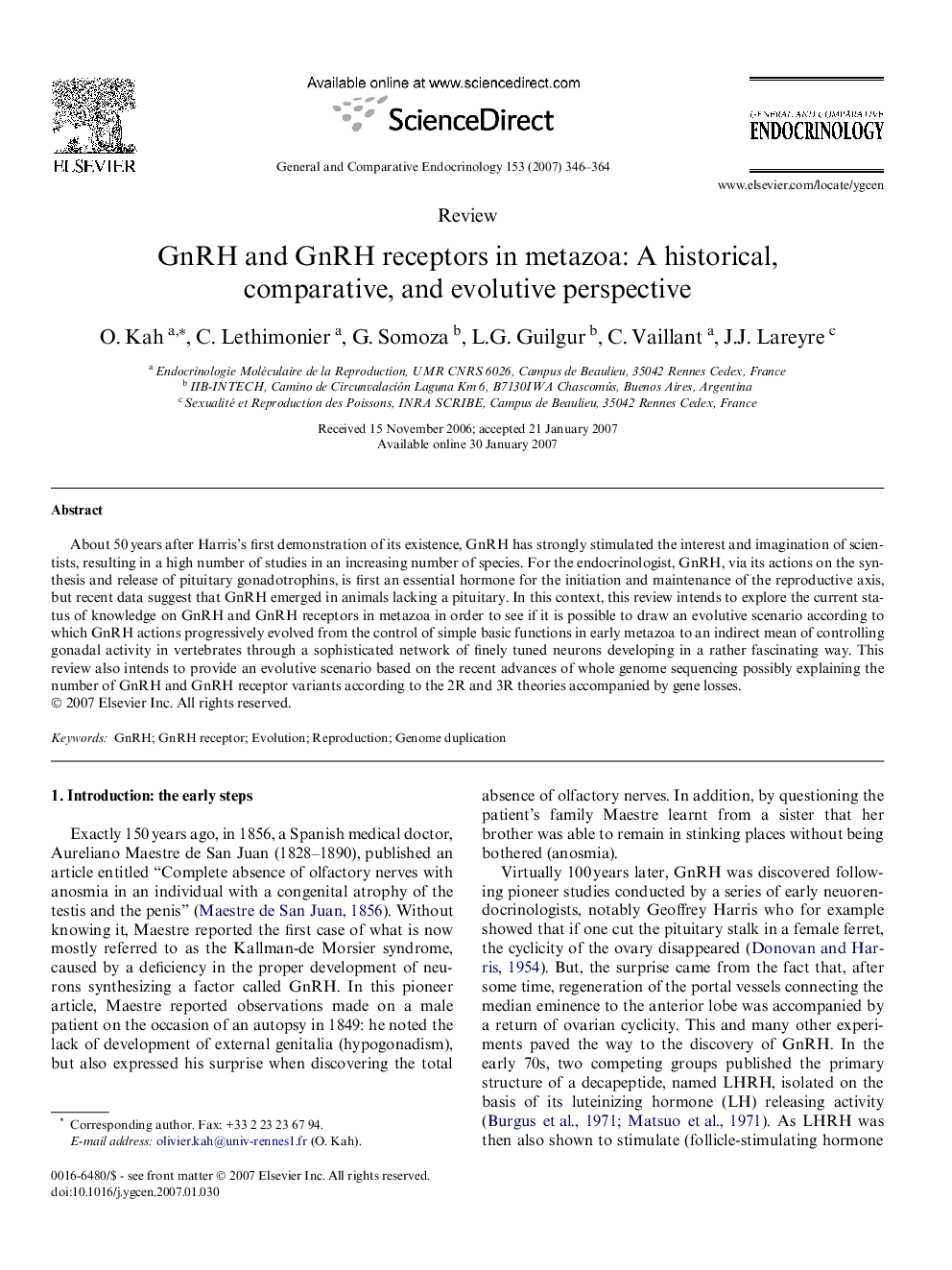| Article ID | Journal | Published Year | Pages | File Type |
|---|---|---|---|---|
| 2801795 | General and Comparative Endocrinology | 2007 | 19 Pages |
About 50 years after Harris’s first demonstration of its existence, GnRH has strongly stimulated the interest and imagination of scientists, resulting in a high number of studies in an increasing number of species. For the endocrinologist, GnRH, via its actions on the synthesis and release of pituitary gonadotrophins, is first an essential hormone for the initiation and maintenance of the reproductive axis, but recent data suggest that GnRH emerged in animals lacking a pituitary. In this context, this review intends to explore the current status of knowledge on GnRH and GnRH receptors in metazoa in order to see if it is possible to draw an evolutive scenario according to which GnRH actions progressively evolved from the control of simple basic functions in early metazoa to an indirect mean of controlling gonadal activity in vertebrates through a sophisticated network of finely tuned neurons developing in a rather fascinating way. This review also intends to provide an evolutive scenario based on the recent advances of whole genome sequencing possibly explaining the number of GnRH and GnRH receptor variants according to the 2R and 3R theories accompanied by gene losses.
